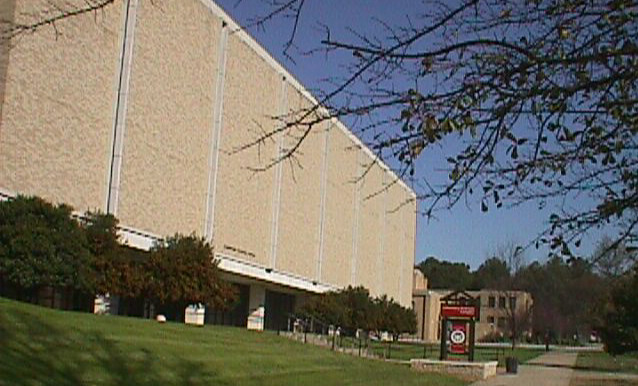
Department of Chemistry
 |
Department of Chemistry and
Physics
|
| CHEM1023 |
Exam 3
|
Note: Only the questions have been listed to save space.
1. Determine a) the order of each reactant, b) the order of the reaction,
c) writ the rate law and d) calculate the rate constant, k, for the following
data: (place answers in spaces beow. 15 points)
| Reaction |
|
|
|
| 1. |
|
|
|
| 2. |
|
|
|
| 3. |
|
|
|
Order of A Order of B .
Reaction Order Rate Law .
k = .
2a. The decomposition of AB3 is first order with a k = 1.5 x 10-5 s-1 at 25oC. If the initial concentration is 0. 50 M, what is the concentration after 2 min? (6 points)
2b. What is the half-life for the reaction in 2a? (4 points)
3. Draw the potential energy vs. rection coordinate plot for
the exothermic reaction of
2 A ------> C + D. Label all parts.
(6 points)
4. Write the Arrhenius equation. (5 points)
5. Fill in the blank. (5 points)
a) List the three types of catalysts , , .
b) Reactants in enzyme reactions are called .
c) The Haber Process is used to .
6. Write the rate expression in terms of D[reactant]/ Dt and D[product]/ Dt for the reaction: (6 points)
7. Define Collision theory. (4 points)
8. Define rate determining step. (4 points)
9. Define catalyst. (4 points)
10. Given the rections below, answer the following questions. (7 points)
rxn 1: 2 NO2 --------> N2O4
rxn 2: N2O4 + CO -------> NO + CO2 + NO2
a) what are the individual steps called?
b) what compound is the intermediate in this mechanism?
c) write the overall reaction
11. Write the equilibrium expression for each of the following: Where
possible, express both K c and K p. (6 points)
| a) Ni (s)+ 4 CO (g) |
|
Ni(CO) 4 (g) |
| b) CH 4 (g) + Cl 2 (g) | HCl (g) + CH 3Cl (g) |
12. For equation 11b, would K c = K p? Explain. (4 points)
13. Given the reaction below:
|
H 2 (g) + I 2 (g)
|
2 HI (g) |
If Q = 25.4 and Kc = 54.3 at 430oC, is the reaction at equilibrium? If not, which way will the reaction proceed? (8 points)
14. Determine the equilibrium concentrations for each species in
the equation:
|
N 2 (g) + O 2 (g)
|
|
2 NO (g) |
if the initial concentrations of N 2 and O 2 are 1.0 M and K c = 0.020 at 2870oC. (8 points)
15. According to Le Chatelier's Principle,
a) what effect would the addition of H + have on the equilibrium
below? (4 points)
|
2 CrO 42 - (aq) +
2 H +(aq)
|
|
Cr2O 7 2 - (aq) + H 2O |
b) what effect would the addition of OH - have on the equilibrium in part a) if the OH -reacts with H + to give water? (4 points)